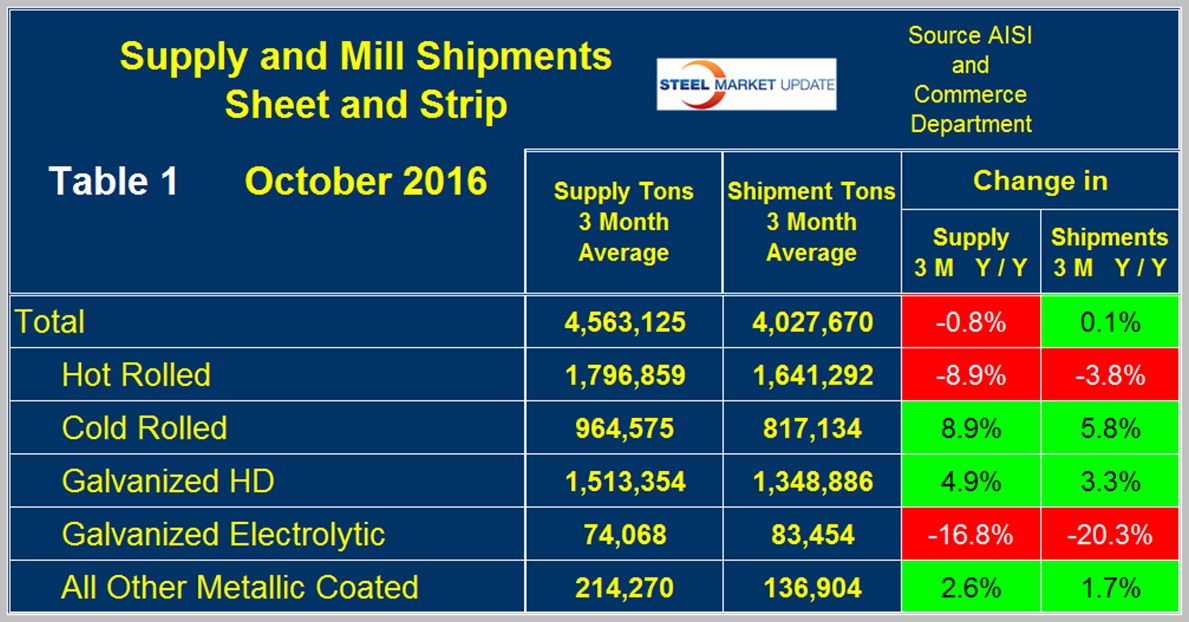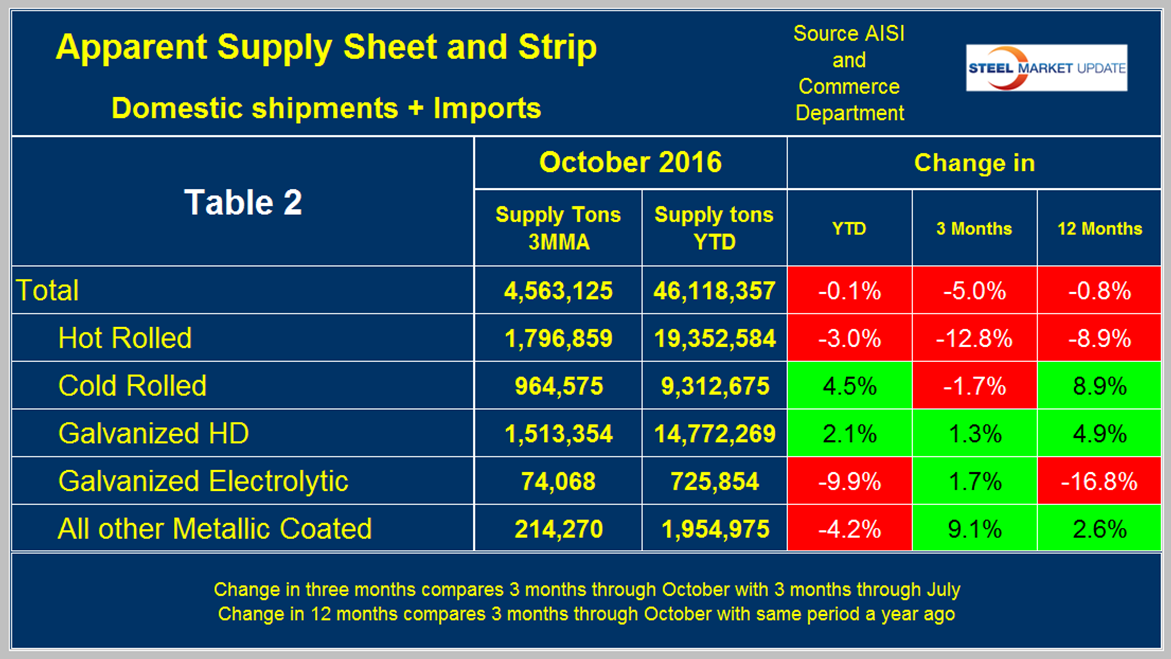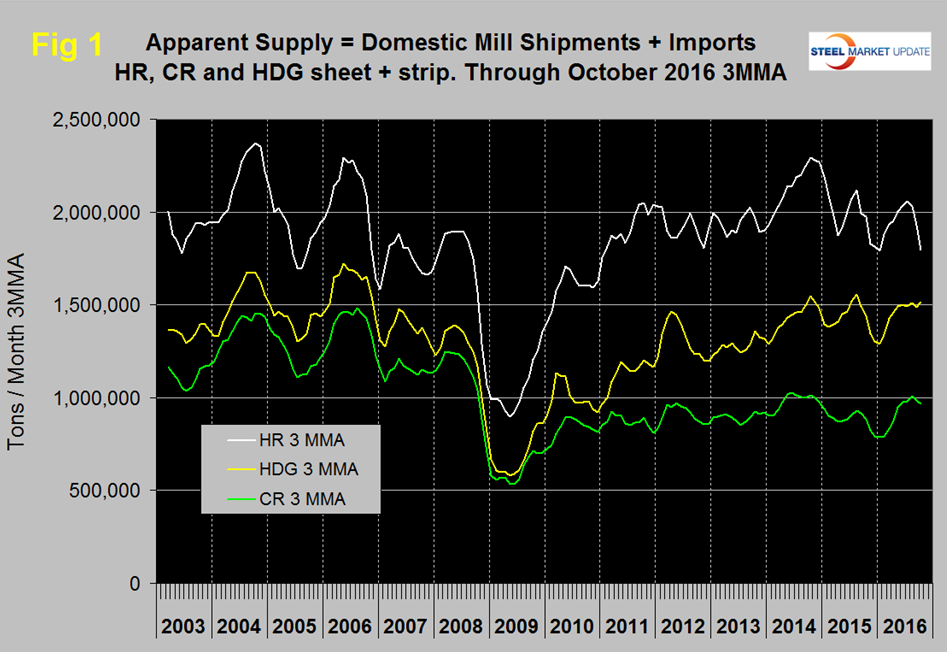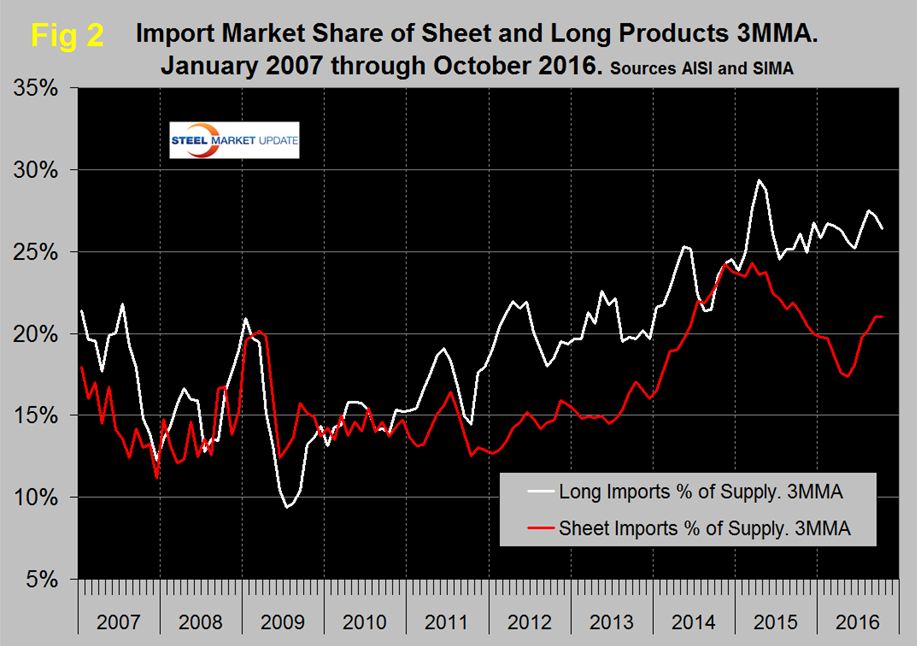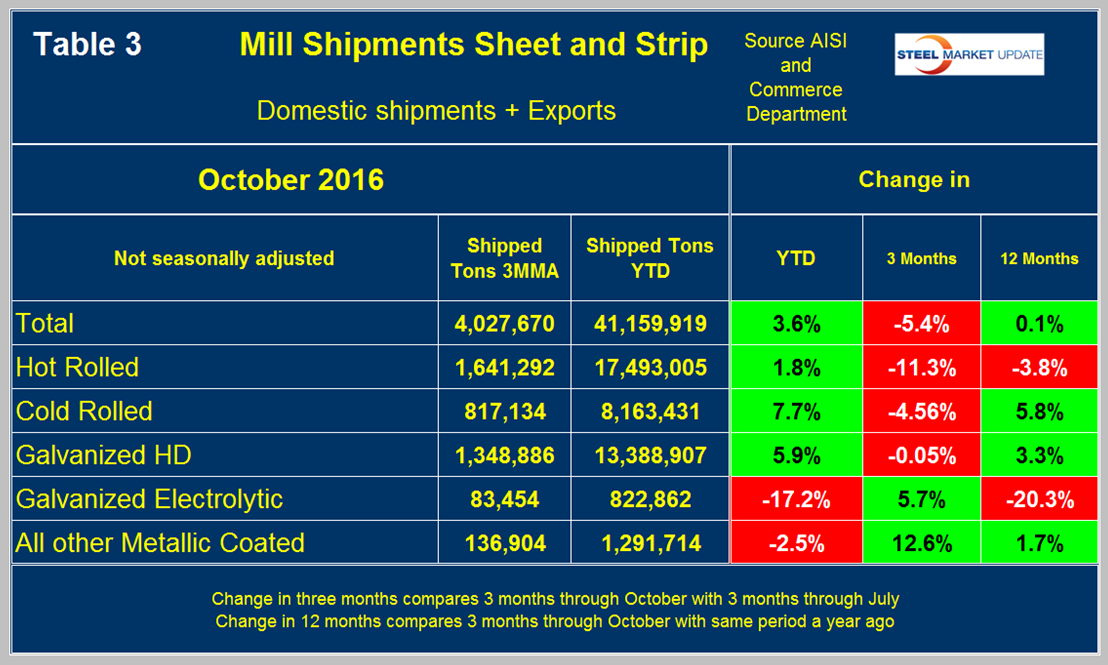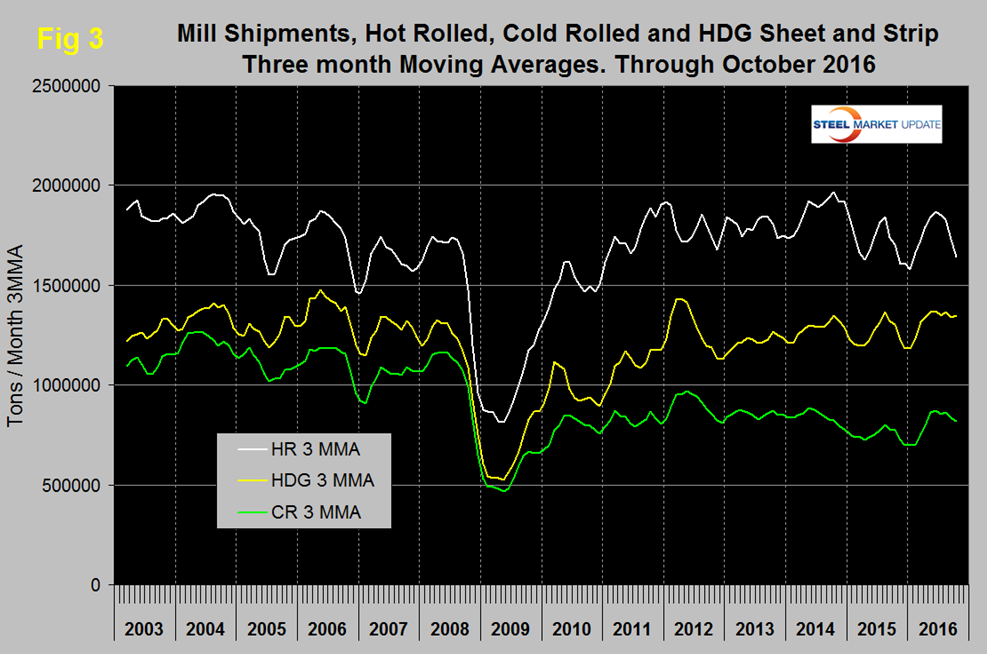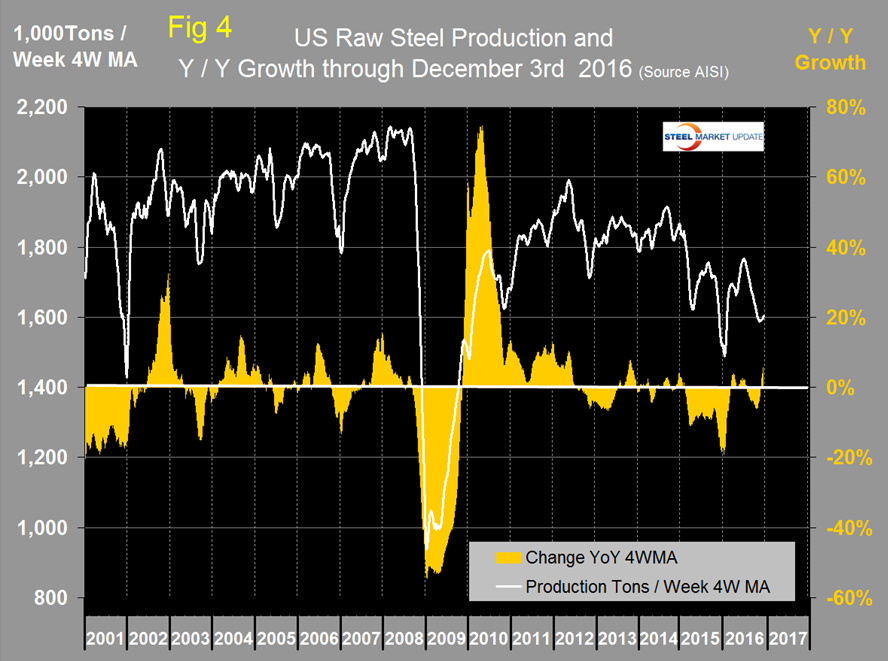Economy

Shipments and Supply of Sheet Products through October 2016
Written by Peter Wright
December 12, 2016
This report summarizes total steel supply from 2003 through October 2016 and year on year changes. It then compares domestic mill shipments and total supply to the market. It quantifies market direction by product and enables a side by side comparison of the degree to which imports have absorbed demand. Sources are the American Iron and Steel Institute and the Department of Commerce with analysis by SMU.
Table 1 shows both apparent supply and mill shipments of sheet products (shipments includes exports) side by side as a three month average through October, for both 2015 and 2016.
Apparent supply is a proxy for market demand. Comparing these two time periods total supply to the market was down by 0.8 percent but shipments were up by 0.1 percent. The fact that shipments were up slightly and supply was down slightly means that over a three month time period imports put less pressure on the market than they did this time last year. Table 1 breaks down the total into product detail and it can be seen that shipments did better than supply for CRC, HDG and other metallic coated but not so for HRC and EG.
A review of supply and shipments separately for individual sheet products is given below.
Apparent Supply
Apparent Supply is defined as domestic mill shipments to domestic locations plus imports. In three months through October 2016 the average monthly supply of sheet and strip was 4.563 million tons, down by 0.8 percent year over year as mentioned above and down by 5.0 percent comparing August through October with the previous three months. The short term decline (3 months) compared to the long term decline (12 months) means that through October momentum became negative. Table 2 shows the change in supply by product on this basis through October. Momentum was negative for all products except electro-galvanized and other metallic coated.
Figure 1 shows the long term supply picture for the three major sheet and strip products, HR, CR and HDG since January 2003 as three month moving averages. HRC has experienced a major decline since June when the 3MMA of supply was 1.866 million tons to 1.641 million tons in October.
Figure 2 shows import market share of sheet products and includes long products for comparison.
Based on a 3MMA the import market share of sheet products declined from 24.3 percent in March last year to 17.4 percent in May this year and has increased to 21.0 percent in both September and October. Long product import market share peaked at 29.4 in October last year, declined abruptly to 24.5 percent in October 2015 and now stands at 26.4 percent in this latest data.
Mill Shipments
Table 3 shows that total shipments of sheet and strip products including hot rolled, cold rolled and all coated products were up by 0.1 percent in 3 months through October year over year and down by 5.4 percent comparing three months through October with three months through July.
Momentum for the total shipments of sheet and strip products was negative because the 3 month growth (-5.4 percent) was less than the 12 month result (+0.1 percent). This was not true of all the individual products. Electro-galvanized and other metallic coated both had positive momentum of shipments. Figure 3 puts the shipment results for the three main products into the long term context since January 2003. This figure looks a lot like the supply data shown in Figure 2 with a severe decline in HRC in the last few months.
SMU Comment: The numbers in this report illustrate why it’s necessary to look at different time periods to try to understand the whole picture. We could draw different conclusions based on whether we look at year over year changes or three month over three months changes. Both are necessary to understand what is going on and the difference between the two indicates direction. A problem with this data is that it’s now approaching mid-December, the latest data we have for shipments and supply is for October and a lot has happened since then to the positive. The AISI puts out weekly data for crude steel production the latest for which was w/e December 3rd. This provides the most current data for steel mill activity. Figure 4 shows the y/y change in weekly crude output on a four week moving average basis.
Growth became positive in w/e March 5th and in the next 19 weeks there was only one week with negative Y/Y growth. Growth became negative again in w/e July 23rd and stayed negative until November 12th with an increasingly improving trend from October 8th through November 12th. In w/e November 19th y/y growth became positive, improving in the next two weeks to reach +5.6 percent in w/e December 3rd.

Peter Wright
Read more from Peter WrightLatest in Economy

Steel groups welcome passage of budget bill
Steel trade groups praised the passage of the Big Beautiful Bill (BBB) in Congress on Thursday.

Industry groups praise Senate for passing tax and budget bill
The Steel Manufacturers Association and the American Iron and Steel Institute applauded the tax provisions included in the Senate's tax and budget reconciliation bill.

Chicago PMI dips 0.1 points in June
The Chicago Purchasing Managers Index (PMI) slipped 0.1 points to 40.4 points, in June.

Multi-family pullback drives housing starts to 5-year low in May
US housing starts tumbled in May to a five-year low, according to figures recently released by the US Census Bureau.

Architecture firms still struggling, ABI data shows
Architecture firms reported a modest improvement in billings through May, yet business conditions remained soft, according to the latest Architecture Billings Index (ABI) release from the American Institute of Architects (AIA) and Deltek.

